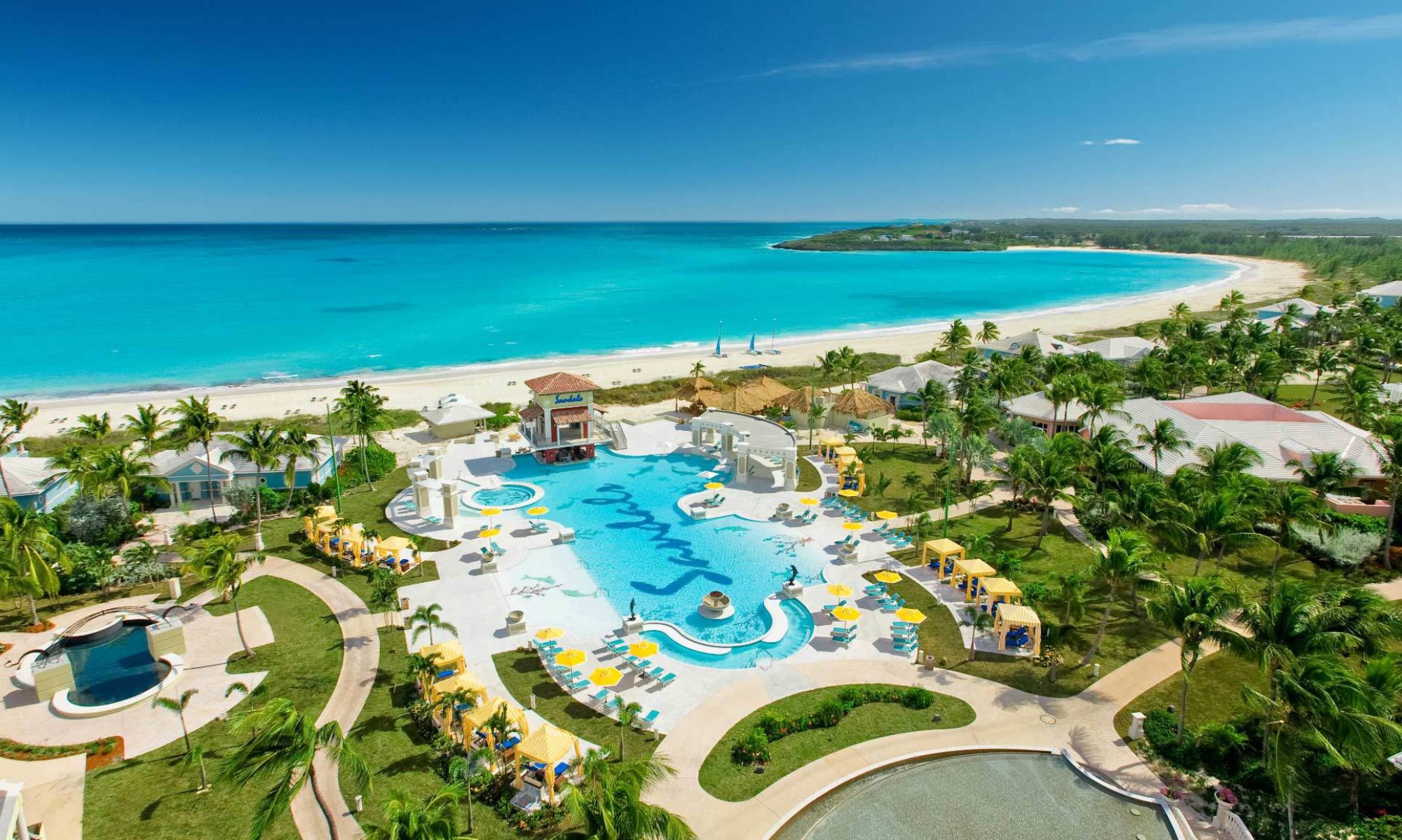When I tell people I spent 9 days exploring Hamburg, Cologne, Leipzig, and Dresden, I usually get blank stares. “But what about Munich? Neuschwanstein Castle? The Rhine Valley?” they ask. Here’s the thing—after years of sending clients to Germany’s greatest hits, I wanted to discover the cities that locals rave about but tourists often skip.
What I found was extraordinary: a Germany that’s authentic, surprising, and completely different from the fairy-tale version most travelers expect. These four cities showed me layers of German culture, history, and personality that I never knew existed. And honestly? This trip changed how I think about German travel completely.
Let me take you on the journey that’s now become my secret weapon for clients who want to experience the real Germany.
Hamburg: The Surprising Maritime Soul (Days 1-3)
I’ll be honest—Hamburg wasn’t even on my radar until a German friend insisted I had to see it. “It’s not what you think,” she said. She was right. This isn’t the Germany of lederhosen and beer halls. This is a city that feels more like Amsterdam had a baby with San Francisco, with a maritime spirit that’s absolutely infectious.
Day 1: First Impressions and Warehouse Wonders The moment I stepped off the train at Hamburg Hauptbahnhof, I knew I was somewhere different. The energy was cosmopolitan but relaxed, and within minutes I was walking along canals that reminded me why Hamburg has more bridges than Venice and Amsterdam combined.
The Speicherstadt blew me away. This UNESCO World Heritage warehouse district looks like something from a Harry Potter movie—Gothic revival brick buildings rising straight from the water, connected by bridges that create this incredible maze of waterways. But here’s what the guidebooks don’t tell you: the best time to experience it is just after sunset when the buildings are lit up and reflected in the dark water. I spent an hour just walking and getting completely lost in the narrow passages.
Day 2: Markets, Music, and Maritime History The Fischmarkt on Sunday morning is absolutely chaotic in the best way possible. I showed up at 6 AM (yes, 6 AM on a Sunday) and found myself in the middle of this incredible theater where vendors are literally auctioning off fish, flowers, and fruit with performances that would make Broadway jealous. The energy was infectious, and I found myself buying way too many apples just because the vendor’s pitch was so entertaining.
But the real discovery was the maritime museum. I’m not usually a museum person, but this place tells the story of how Hamburg shaped world trade and immigration. Standing on the historic ships, I understood why Hamburg calls itself “The Gateway to the World.” The immigration museum was particularly moving—millions of Europeans passed through here on their way to America, and you can actually trace family histories through their records.
Evening magic: St. Pauli isn’t just about the infamous Reeperbahn (though that’s fascinating too). The neighborhood has this incredible mix of gritty nightlife, amazing restaurants, and surprisingly beautiful architecture. I had the best seafood dinner of my life at a tiny place where the menu was only in German and the waiter had to translate everything. The local Hamburg fish stew was a revelation.
Day 3: Gardens, Galleries, and Local Life My final Hamburg day was all about seeing how locals actually live. Planten un Blomen (yes, that’s how they spell it in the local dialect) is this gorgeous park right in the city center where families gather for picnics and the elderly play chess under ancient trees. It felt like I was seeing Hamburg’s soul.
The Kunsthalle surprised me with its incredible collection—I had no idea Hamburg had such serious art. But the real find was the Deichtorhallen, this contemporary art space in former market halls. The contrast between the industrial architecture and cutting-edge art was perfect Hamburg: historic but progressive, traditional but innovative.
Local insight: I spent my afternoon in the Sternschanze district, where students and young professionals live. The coffee shops, vintage stores, and casual restaurants gave me a completely different perspective on German urban culture. This wasn’t tourist Germany—this was real, contemporary German life.
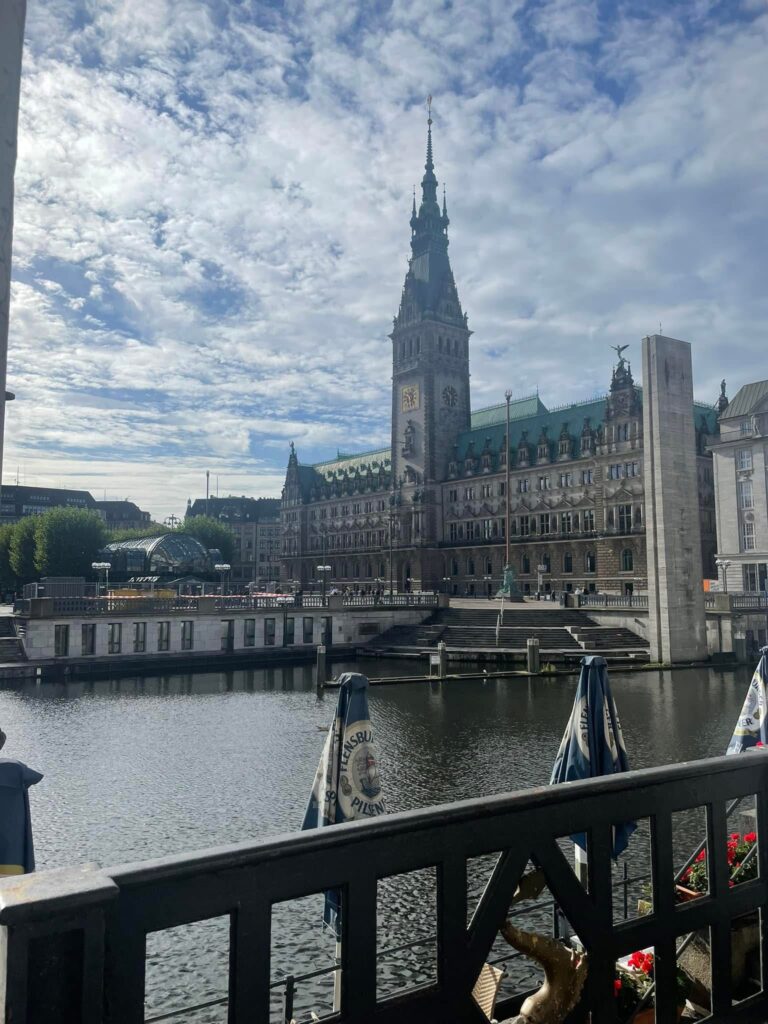
Cologne: Ancient Meets Modern (Days 4-5)
The train ride from Hamburg to Cologne was gorgeous—rolling countryside that looked like a postcard. But nothing prepared me for that first glimpse of Cologne Cathedral rising above the city as we pulled into the station. It’s one of those moments that actually takes your breath away.
Day 4: Cathedral Wonders and Roman Roots Cologne Cathedral is obviously the star, but here’s what I didn’t expect: you can actually go down into the archaeological excavations beneath it and see 2,000-year-old Roman ruins. Standing in what used to be a Roman governor’s palace, then looking up at Gothic spires, I felt like I was experiencing the entire sweep of European history in one place.
The cathedral treasury was incredible—medieval gold work and religious artifacts that made me understand why Cologne was one of the most important cities in medieval Europe. But the real thrill was climbing the 533 steps to the top of the south tower. The views over the Rhine and the city were spectacular, but what struck me most was seeing the incredible detail of the Gothic stonework up close.
Afternoon surprise: The Romano-Germanic Museum right next to the cathedral houses the most incredible Roman mosaics I’ve ever seen. The Dionysus mosaic is displayed exactly where it was found, and you realize you’re standing where Romans walked 2,000 years ago. Cologne’s history suddenly made sense—this wasn’t just a medieval city, it was one of the Roman Empire’s most important northern outposts.
Evening discovery: I wandered into the old town and found myself in a traditional brauhaus (brewery) where they serve Kölsch, Cologne’s unique beer, in tiny glasses that hold exactly 200ml. The ritual is amazing—they keep bringing you fresh glasses until you put your coaster on top to say you’re done. The local atmosphere was so warm and welcoming, and I ended up talking with locals who were fascinated that an American was visiting their city instead of Munich.
Day 5: Art, Architecture, and Authentic Neighborhoods The Wallraf-Richartz Museum has one of the world’s best collections of medieval art, which provided perfect context for understanding the cathedral’s significance. But the real surprise was the Museum Ludwig’s contemporary art collection—I had no idea Cologne was such an important art center.
Hidden gem alert: I spent my afternoon in the Belgisches Viertel (Belgian Quarter), where beautiful 19th-century buildings house incredible boutiques, galleries, and cafes. It felt like a more relaxed version of Paris’s Marais district. The neighborhood had this sophisticated, artistic vibe that was completely different from tourist Cologne.
Local connection: I struck up a conversation with a gallery owner who explained how Cologne became Germany’s art capital after World War II. The city’s progressive attitude and central location made it a hub for avant-garde artists and galleries. This gave me a completely new perspective on German cultural history.
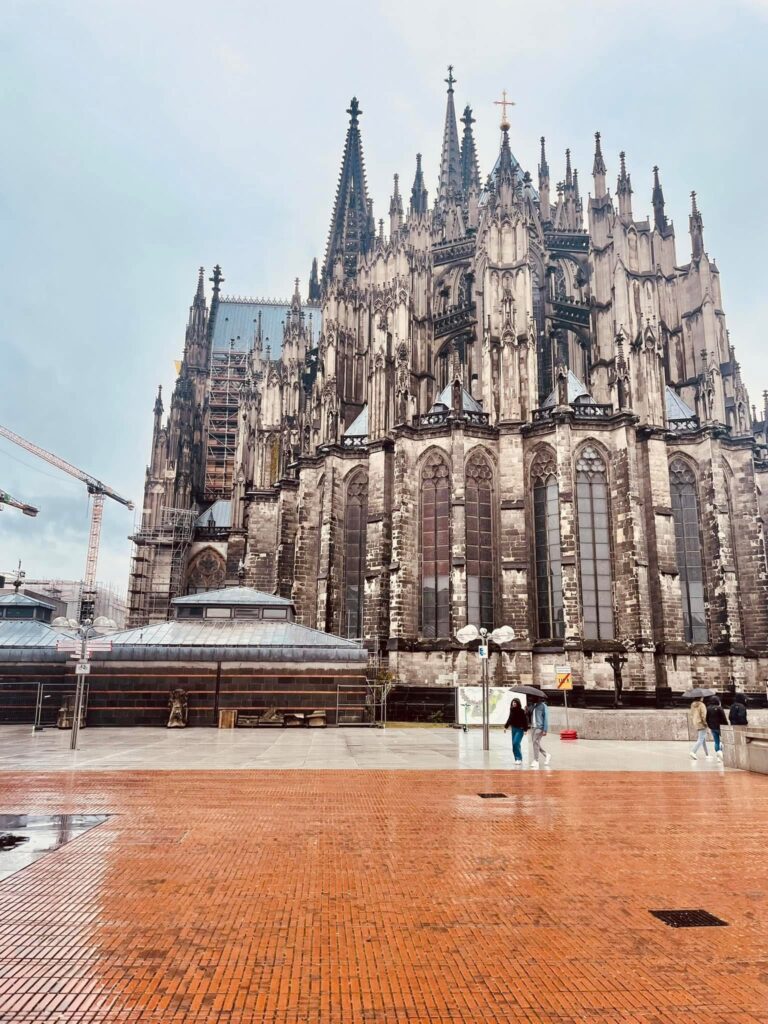
Leipzig: The Revolution City (Days 6-7)
I knew Leipzig was called the “City of Music” because of Bach, but I had no idea it was also the birthplace of the peaceful revolution that brought down the Berlin Wall. This city completely changed my understanding of recent German history.
Day 6: Bach, Books, and Revolutionary Spirit St. Thomas Church, where Bach was cantor for 27 years, was my first stop. Hearing the St. Thomas Boys’ Choir rehearse in the same space where Bach premiered his greatest works was genuinely moving. The church itself is surprisingly simple, but the musical history that happened here is overwhelming.
But the real discovery was the Story of Leipzig museum, which explains how the Monday demonstrations that started here in 1989 eventually led to German reunification. Standing in the same streets where thousands of people gathered with candles, chanting “We are the people,” I felt the weight of history in a completely different way.
Afternoon exploration: Leipzig’s city center is incredible—a mix of medieval buildings, Renaissance architecture, and beautiful shopping arcades from the 19th century. The old market square feels like the heart of a trading city that connected Eastern and Western Europe for centuries.
Evening revelation: I went to a concert at the Gewandhaus, Leipzig’s famous concert hall. The acoustics were incredible, and the program notes explained how Leipzig’s musical tradition influenced composers from Bach to Mendelssohn to Schumann. The city’s musical heritage suddenly made sense—this wasn’t just where Bach worked, this was where German classical music was born.
Day 7: Student Life and Hidden Courtyards Leipzig University is one of Germany’s oldest, and the student energy is palpable throughout the city. I spent my morning exploring the university quarter, where historical buildings mix with modern student life. The contrast between medieval lecture halls and contemporary student cafes was fascinating.
Secret discovery: Leipzig’s passage system—beautiful covered shopping arcades from the 19th century—creates this incredible network of courtyards and walkways. I spent hours just wandering through these passages, discovering tiny cafes, bookshops, and galleries. It felt like exploring a secret city within the city.
Cultural immersion: I attended a reading at a local bookshop where a contemporary German author was discussing his work. Even though my German is rusty, the intellectual atmosphere was incredible. Leipzig’s reputation as a literary city became completely clear—this is where ideas are taken seriously and culture is lived, not just performed.
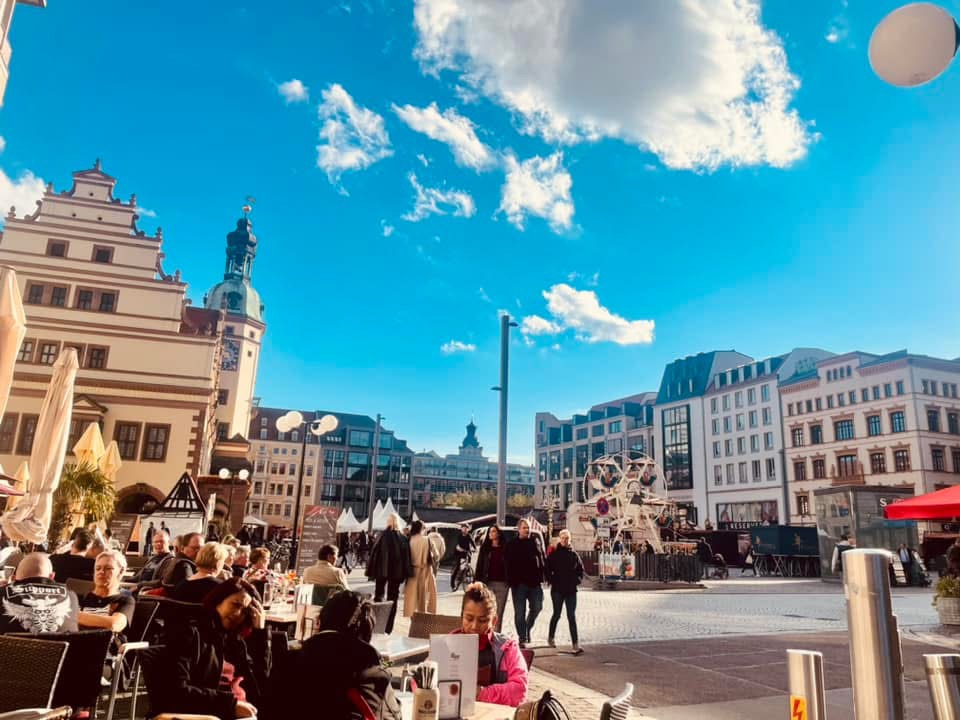
Dresden: The Phoenix City (Days 8-9)
Nothing prepared me for Dresden. I knew it had been rebuilt after World War II, but I expected something that felt reconstructed and artificial. Instead, I found a city that had been reborn with incredible attention to detail and respect for its baroque heritage.
Day 8: Baroque Splendor and Artistic Treasures The Zwinger Palace complex is absolutely breathtaking. The baroque architecture is so ornate and beautiful that it almost feels like a movie set. But the Old Masters Gallery inside houses one of the world’s greatest art collections. Standing in front of Raphael’s Sistine Madonna, I understood why Dresden was called the “Florence of the North.”
Emotional moment: The Frauenkirche (Church of Our Lady) was the most moving experience of my entire trip. This baroque church was completely destroyed in the 1945 bombing, left as ruins for 45 years, then painstakingly rebuilt using the original stones wherever possible. You can still see the dark stones from the original building mixed with the new light stone. The story of reconciliation and rebuilding that this church represents brought tears to my eyes.
Evening magic: Walking along the Elbe River at sunset, with the baroque skyline reflected in the water, I understood why Dresden is considered one of Europe’s most beautiful cities. The combination of architecture, river, and surrounding hills creates this incredibly romantic atmosphere.
Day 9: Porcelain, Palaces, and Final Reflections The Porcelain Collection at the Zwinger showed me why Dresden was the luxury capital of Europe in the 18th century. The craftsmanship was incredible, and I learned how the discovery of European porcelain manufacturing happened right here in nearby Meissen.
Final discovery: I spent my last afternoon in the Neustadt district, across the river from the historic center. This area has a completely different energy—young, artistic, and alternative. The contrast between baroque Dresden and contemporary German culture was perfect. Street art, trendy cafes, and vintage shops showed me that Dresden isn’t just a museum city—it’s a living, breathing place where young Germans are creating their own culture.
Reflection moment: My final evening, I sat in a beer garden along the Elbe, watching the baroque skyline light up as the sun set. Nine days earlier, I thought I knew Germany. Now I realized I had barely scratched the surface.
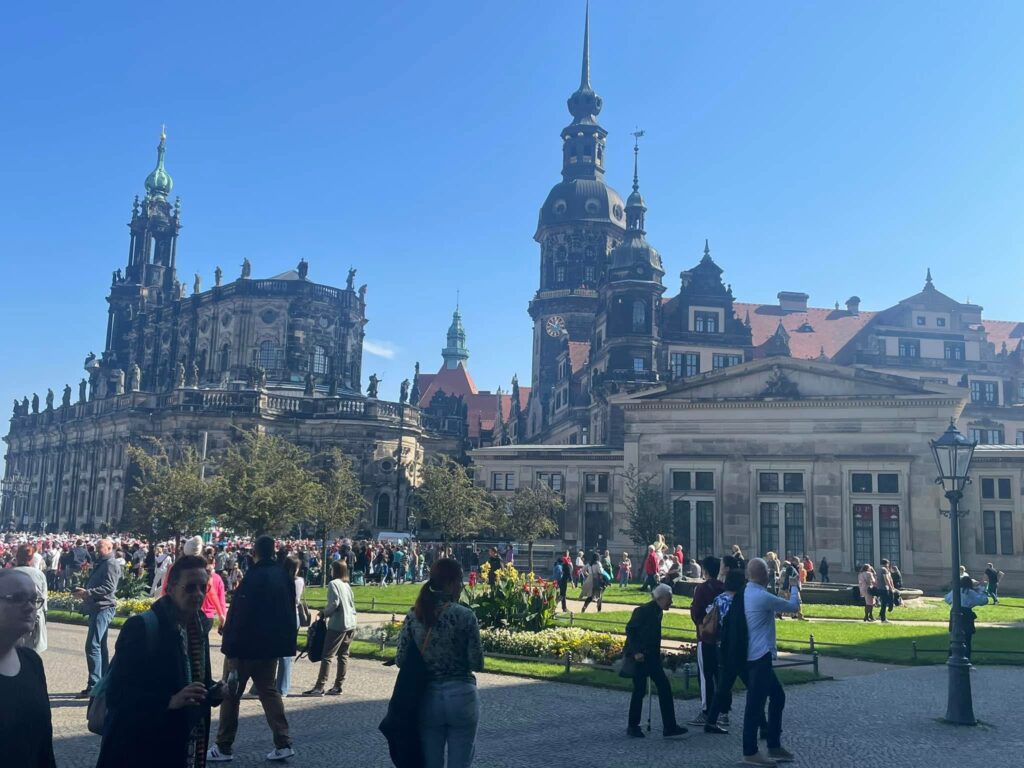
What This Journey Taught Me About German Travel
This trip completely changed how I think about German travel planning. Here’s what I learned:
Germany’s diversity is incredible: Each city had its own distinct personality, history, and culture. Hamburg’s maritime cosmopolitan vibe, Cologne’s Roman-to-modern layers, Leipzig’s musical and revolutionary spirit, Dresden’s baroque beauty—they felt like different countries.
Off-the-beaten-path doesn’t mean off-the-grid: These cities all have excellent infrastructure, great restaurants, and fascinating attractions. They’re just not on the typical tourist route, which means you get authentic experiences without the crowds.
History is everywhere: From Roman ruins to revolutionary sites to baroque palaces, German history is incredibly rich and complex. But it’s not just in museums—it’s in the streets, buildings, and daily life.
Germans are incredibly welcoming: Maybe because these cities see fewer tourists, locals were genuinely excited to share their cities with me. I had more authentic conversations and cultural exchanges than on any previous trip.
Why I Now Recommend This Route to Clients
After this experience, I’ve started offering this itinerary to clients who want to see the real Germany. Here’s why it works:
Perfect progression: You start with Hamburg’s international maritime energy, move through Cologne’s ancient-to-modern layers, experience Leipzig’s musical and revolutionary history, and end with Dresden’s baroque beauty. Each city builds on the previous one.
Cultural depth: This route gives you German culture from multiple angles—trade and commerce, religion and art, music and revolution, craftsmanship and beauty.
Authentic experiences: Because these cities aren’t overrun with tourists, you get genuine cultural encounters and can experience how Germans actually live.
Excellent logistics: The train connections are easy, the cities are compact and walkable, and the infrastructure is world-class.
Planning Your Own German Adventure
If this journey sounds appealing, here’s what you need to know: this type of trip requires different planning than typical tourist routes. These cities have incredible experiences, but they’re not always obvious or easily bookable online.
Local connections matter: The best restaurants, most interesting cultural events, and most authentic experiences often require local knowledge and advance planning.
Timing is everything: Concert schedules, museum exhibitions, and local festivals can make or break your experience. Professional planning ensures you’re in the right place at the right time.
Cultural context enhances everything: Understanding the historical and cultural significance of what you’re seeing transforms sightseeing into genuine cultural education.
This trip showed me that Germany has so much more to offer than the typical tourist trail. When you’re ready to discover the Germany that Germans love—the cities where culture is lived rather than performed, where history is layered and complex, where contemporary life mixes with ancient traditions—let’s talk about creating your own authentic German adventure.
https://www.vincentvacations.com/agents/gretchenode/travelform
Ready to explore the real Germany? Contact me today to start planning your journey beyond the tourist trail!
